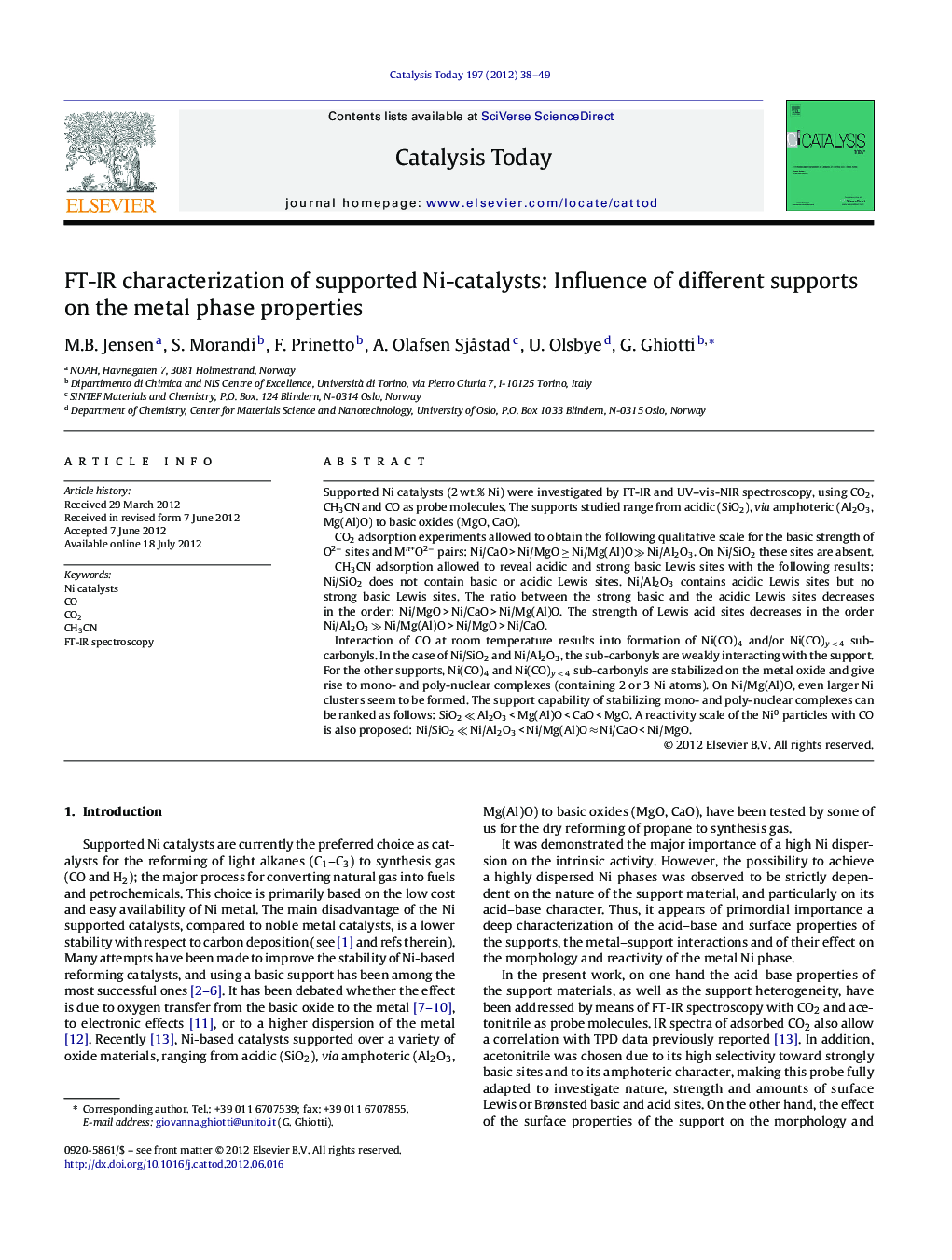| Article ID | Journal | Published Year | Pages | File Type |
|---|---|---|---|---|
| 55307 | Catalysis Today | 2012 | 12 Pages |
Supported Ni catalysts (2 wt.% Ni) were investigated by FT-IR and UV–vis-NIR spectroscopy, using CO2, CH3CN and CO as probe molecules. The supports studied range from acidic (SiO2), via amphoteric (Al2O3, Mg(Al)O) to basic oxides (MgO, CaO).CO2 adsorption experiments allowed to obtain the following qualitative scale for the basic strength of O2− sites and Mn+O2− pairs: Ni/CaO > Ni/MgO ≥ Ni/Mg(Al)O ≫ Ni/Al2O3. On Ni/SiO2 these sites are absent.CH3CN adsorption allowed to reveal acidic and strong basic Lewis sites with the following results: Ni/SiO2 does not contain basic or acidic Lewis sites. Ni/Al2O3 contains acidic Lewis sites but no strong basic Lewis sites. The ratio between the strong basic and the acidic Lewis sites decreases in the order: Ni/MgO > Ni/CaO > Ni/Mg(Al)O. The strength of Lewis acid sites decreases in the order Ni/Al2O3 ≫ Ni/Mg(Al)O > Ni/MgO > Ni/CaO.Interaction of CO at room temperature results into formation of Ni(CO)4 and/or Ni(CO)y < 4 sub-carbonyls. In the case of Ni/SiO2 and Ni/Al2O3, the sub-carbonyls are weakly interacting with the support. For the other supports, Ni(CO)4 and Ni(CO)y < 4 sub-carbonyls are stabilized on the metal oxide and give rise to mono- and poly-nuclear complexes (containing 2 or 3 Ni atoms). On Ni/Mg(Al)O, even larger Ni clusters seem to be formed. The support capability of stabilizing mono- and poly-nuclear complexes can be ranked as follows: SiO2 ≪ Al2O3 < Mg(Al)O < CaO < MgO. A reactivity scale of the Ni0 particles with CO is also proposed: Ni/SiO2 ≪ Ni/Al2O3 < Ni/Mg(Al)O ≈ Ni/CaO < Ni/MgO.
Graphical abstractFigure optionsDownload full-size imageDownload high-quality image (239 K)Download as PowerPoint slideHighlights► Supported Ni catalysts investigated by FT-IR and UV–vis-NIR. ► Supports: acidic (SiO2), amphoteric (Al2O3, Mg(Al)O) and basic oxides (MgO, CaO). ► CO2, CH3CN and CO probe molecules. ► Basic strength of O2− sites and Mn+O2− pairs determined by CO2 and CH3CN adsorption. ► Support stabilizing effect on sub-carbonyls formed by Ni reactivity toward CO.
